Saltmarsh sparrows, bobolinks at a 'tipping point.' The status of New England's birds.
Silent deaths likely undetectable to the human eye, saltmarsh sparrow chicks are drowning along Rhode Island's coast as high tides become higher. Nests of the bobolink — black and white songbirds with a straw-colored cap — are being decimated by tractor blades in the hayfields of Vermont.
Both species have each already lost half or more of their populations in the past 50 years. If nothing changes, they're on a track to be halved again.
The 2022 "State of the Birds" report
released on Oct. 12, published by 33 science and conservation organizations and agencies, revealed more than half of U.S. bird species are declining and grassland bird populations are shrinking the fastest — with a 34% loss since 1970.
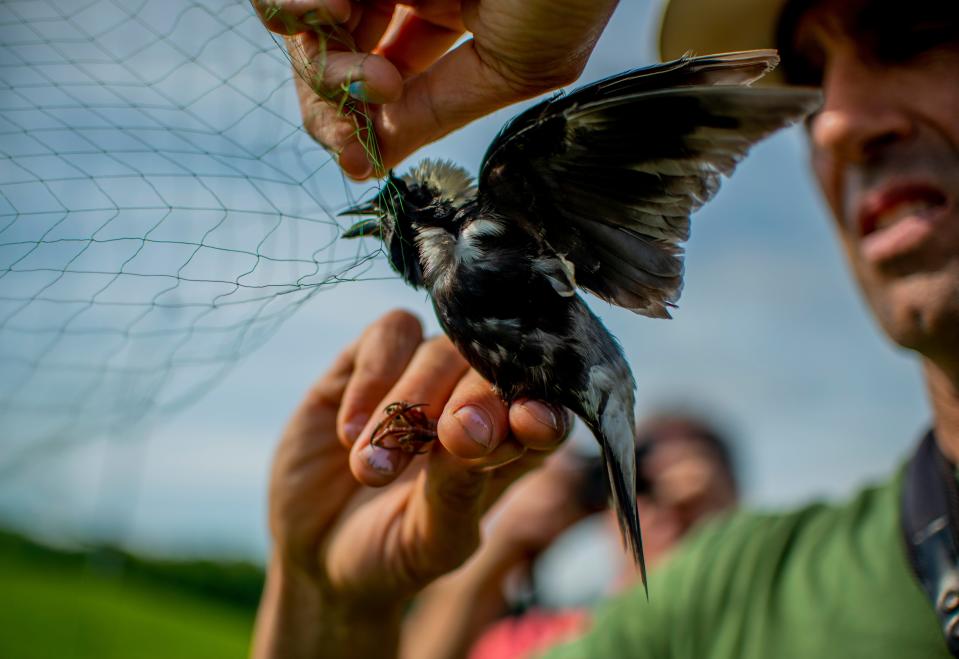
The report paints the status of birds as a warning siren for the world. Intensifying stress on birds is a mounting combination of climate change, habitat loss and environmental degradation. Birds are declining overall in every habitat except wetlands, an ecosystem where decades of investment and successful policy have resulted in positive gains, particularly in waterfowl species, such as ducks and geese.
Amanda Rodewald, director of the Cornell Lab of Ornithology’s Center for Avian Population Studies, pointed to the "co-benefits" of bird conservation.
Funky bird sightings in New England: That parakeet in your yard? Here's why it probably isn't a lost pet
"We know, of course, birds are indicators, canaries in the coal mine, early warnings of environmental changes that can effect us," she said. "More than that, many of the same actions we need to take to conserve birds are the same ones we need to take to protect human health and well-being."
Some of New England's smallest and most vulnerable birds were named in the report among 70 "tipping point" species where urgent action is needed to prevent them from becoming endangered. The report cited "immediate science and conservation actions" required to turn around declines.
Rodewald said New England is an important breeding habitat for birds, as well as a stopover for migration and a place to spend winters.
"These are species that are really in danger of going extinct," she said. "We need to do something now so we can avert that and be proactive."
Birds to watch: 'Tipping point' species in New England need action
The "State of the Birds" report is the first national look at birds since a landmark study in 2019 showed the country had lost 3 billion birds in the U.S. and Canada over 50 years.
Species that live or breed in New England listed as "tipping point" species include the saltmarsh sparrow, bobolink, least tern, Bicknell's thrush, chimney swift and prairie warbler.
These species are high priorities for science and conservation because of their extinction vulnerability and steep population declines, the report said.
Not listed as a tipping point species but still experiencing concerning population decreases are puffins, the report said, pointing to two colonies on islands off the coast of Maine where breeding productivity plunged during periods of marine heatwaves.
In 2021, Maine's beloved puffins suffered one of their worst years for reproduction in decades due to a lack of the small fish they eat.
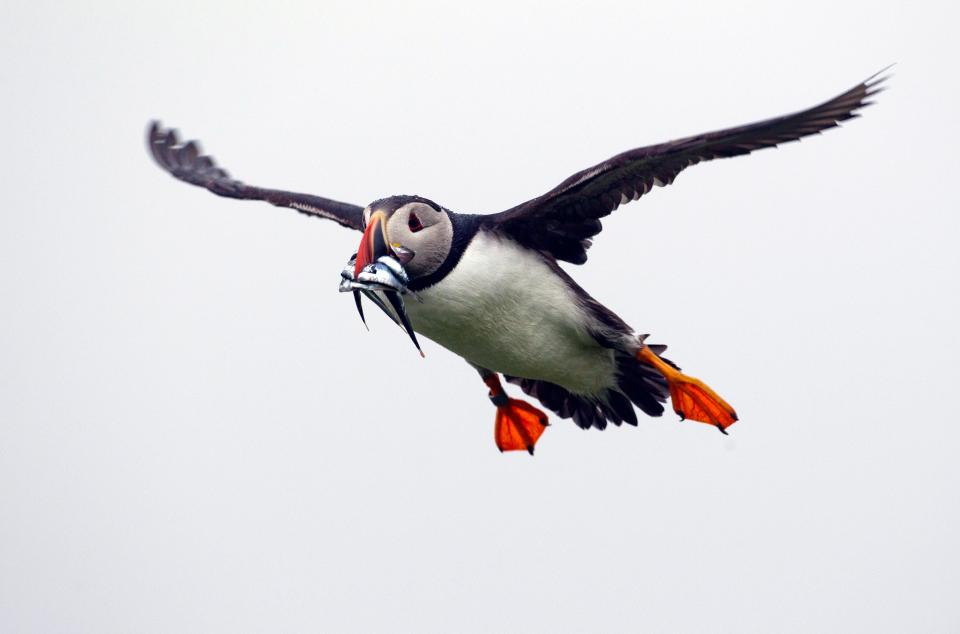
Warming ocean temperature as a result of climate change is a major stressor on seabird populations like puffins, impacting prey fish populations and subjecting them to sea level rise and increasing storms.
Bad breeding season: 2021 was a low reproduction year for Maine's puffins
These seabirds are the harbingers of changing oceans: Studying them involves lots of poop.
Joan Walsh, the Gerard Bertrand chair of natural history and field ornithology at Mass Audubon, said the "State of the Birds" report is one "every person should read."
"One of the reasons I study birds is what they're really telling me is what the health of the world is that I'm a part of," said Walsh. "One of (the report's) points here is pay attention. We need to get into a cycle of recovery for these birds before they become the next roseate tern or condor (both federally endangered species)."
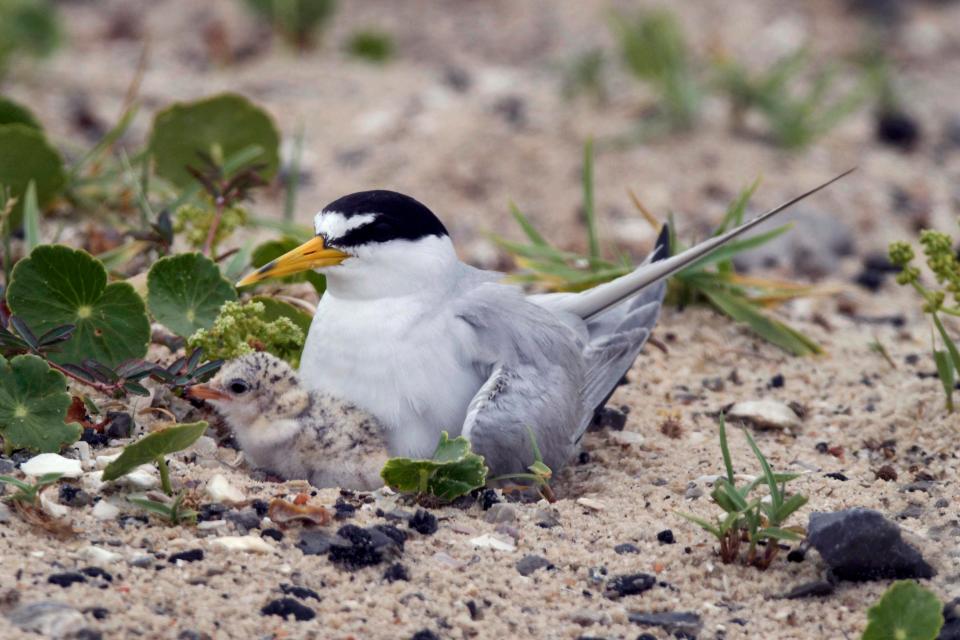
Walsh noted the report's tipping point species don't include birds that are already federally-designated as endangered: 89 bird species are listed as either threatened or endangered under the U.S. Endangered Species Act.
Bobolink bird threatened in New England fields, farmland
Bobolinks are small songbirds that breed in New England's fields and pastures. The birds travel three days straight from the rice fields of Argentina to make their summer home up north.
But bobolinks have found themselves in a perfect storm with agricultural practices impacting the timing of their breeding. Other factors such as development and pesticides also affect them.
"Their young are just getting ready to fledge just when the hay is right," said Walsh. "We're hosting them in fields that are traps for them."
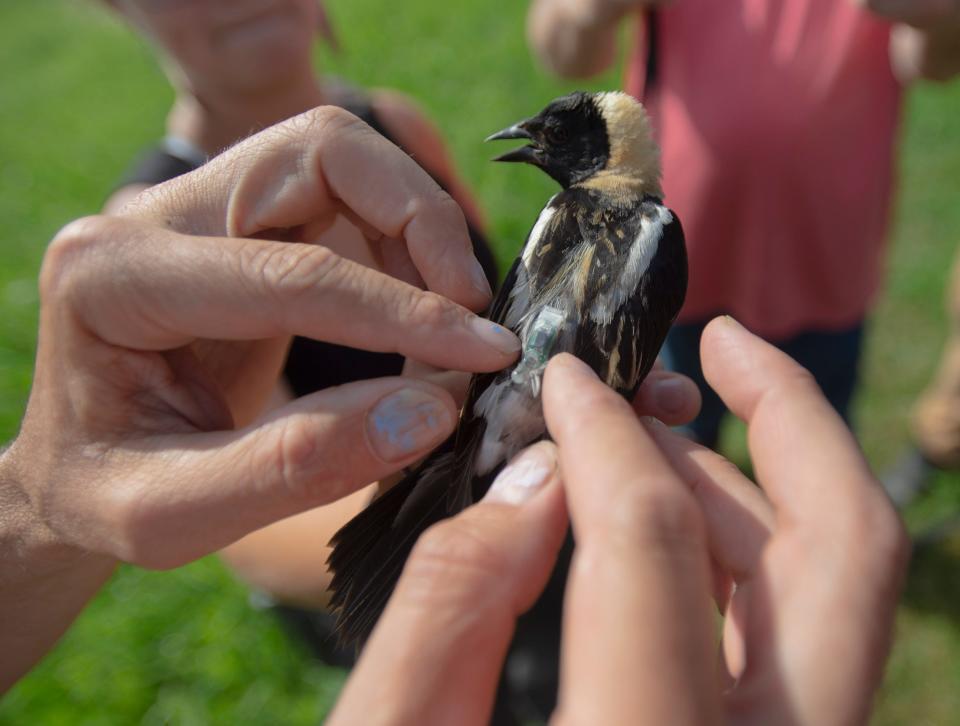
While working for the University of Vermont, Noah Perlut made a ground-breaking discovery: If farmers cut hay early and wait 65 days before a second cut, bobolinks have enough time to breed and raise their young. Now assistant academic director of the School of Marine and Environmental Programs at the University of New England, Perlut has spent the last 20 years studying bobolinks.
Saving bobolinks: How Vermonters are working to save the last refuge of grassland birds
Perlut's research led Vermont's Shelburne Farms to change the schedule in which the farm mows and hays its more than 1,000 acres.
The regional Bobolink Project — administered by Mass Audubon, Audubon Vermont, and New Hampshire Audubon — uses donated funds to provide financial assistance to participating farmers who modify their mowing schedules so that grassland-nesting birds can successfully raise their young.
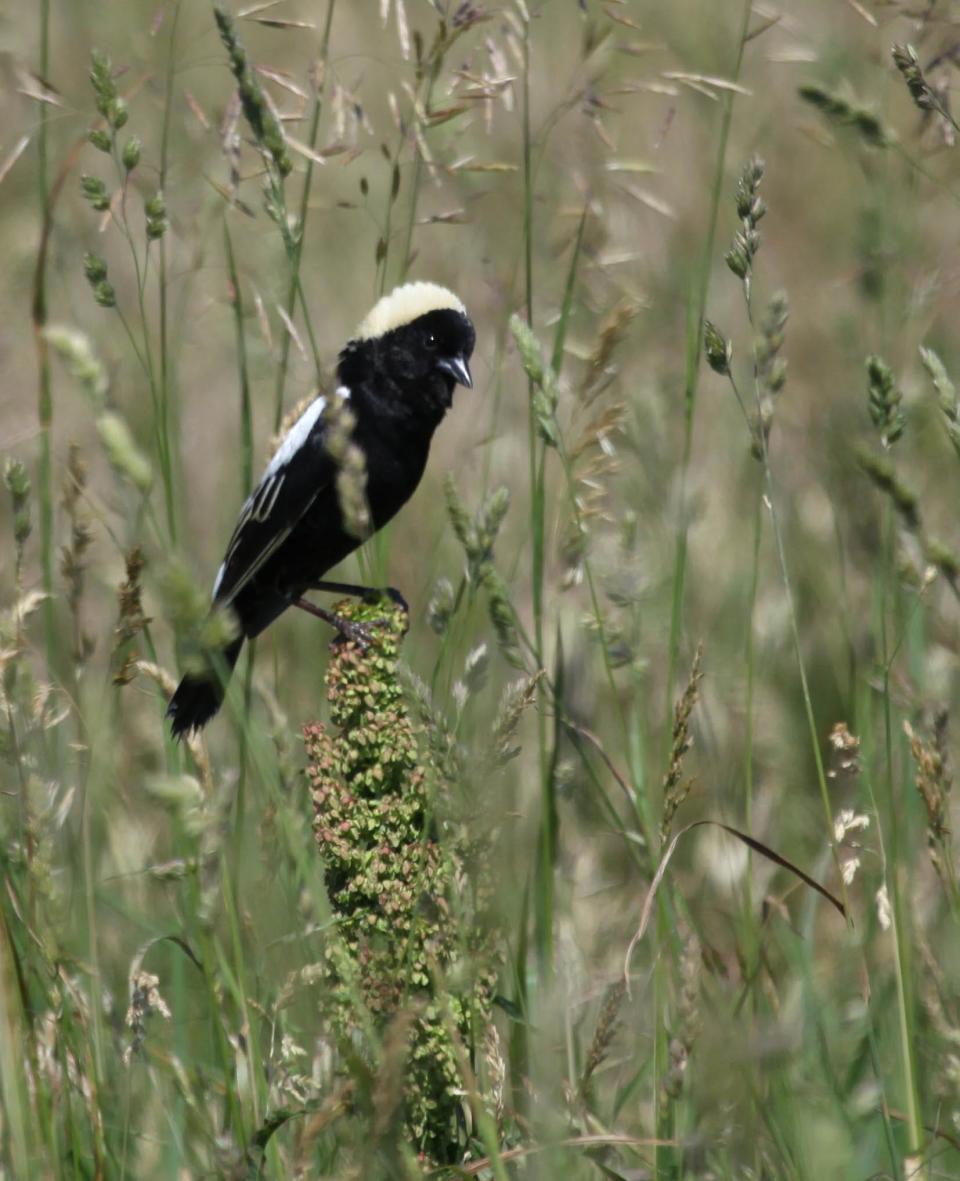
In 2021, the Bobolink Project was able to save more than 1,000 acres of grasslands across New England and New York.
"The farmers are completely engaged in it, with many farmers returning year after year," said Walsh. "We make thousands of baby bobolinks every year."
A similar effort is taking place in Maine — a partnership between the Somerset County Soil and Water Conservation District’s Ag Allies program and Maine Audubon. Since 2016, Ag Allies has worked with landowners and land trusts across the state to increase the nesting success of grassland birds through incentive payments, technical assistance, outreach and education. Now, Maine Audubon will help them expand the program.
Saltmarsh sparrows threatened by sea level rise along New England coast
In Rhode Island, Massachusetts and New Hampshire, people have mobilized to save the tiny saltmarsh sparrow from encroaching sea level rise.
The sparrows nest in vegetation just inches above the water, and with sea levels rising, "salt marsh habitats are being lost entirely," said Rodewald.
Nearly nine out of 10 saltmarsh sparrows have disappeared in the last 25 years, and the species only breeds along salt marshes between Virginia and Maine. Researchers have predicted the saltmarsh sparrow could become extinct by 2040 because of global warming-induced rising sea levels.
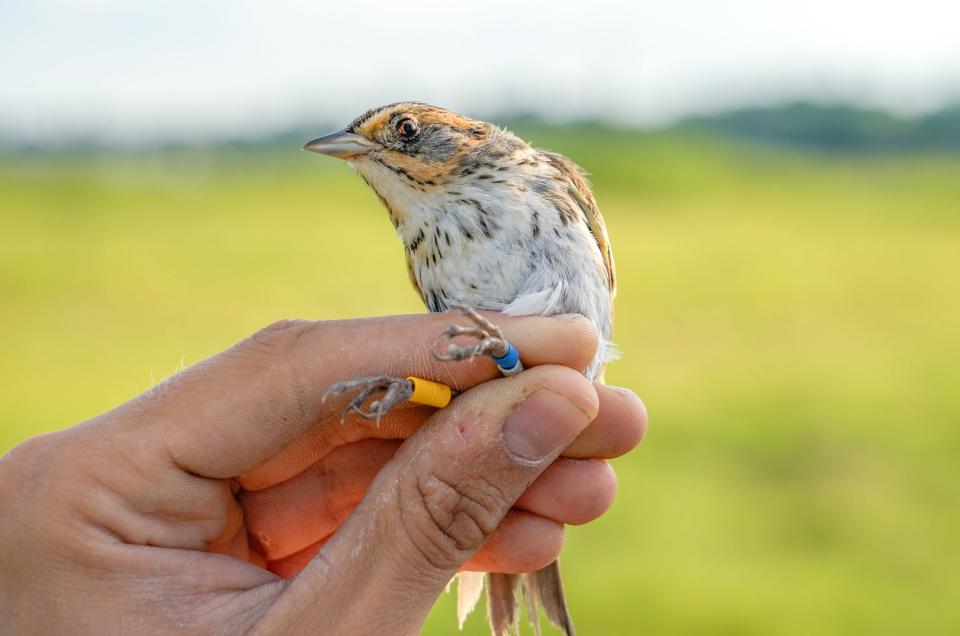
The Saltmarsh Sparrow Research Initiative has gone to Jacob's Point in Warren, Rhode Island for six years to track the 100 or so birds that mate there every summer. A "salt meadow," Jacob's Point sports vegetation such as salt marsh hay, spike grass, black grass, high tide bush and cordgrass — an essential combination for the sparrows' nesting.
Race against time: Rising seas push the saltmarsh sparrow to the edge of extinction
“They’re like no other bird in the world,” Deirdre Robinson, co-director of the Salt Marsh Sparrow Research Initiative, said this summer. “When they’re gone, we’ll have lost something really unique.”
In tandem with the saltmarsh sparrow conservation efforts, environmental partners such as Save the Bay and Rhode Island Coastal Resources Management Council are trying to raise salt marshes by artificial means, to save the ecosystems themselves from sea level rise.
The Quonnie salt marsh was drowning: How a desperate plan is saving it and other marshes
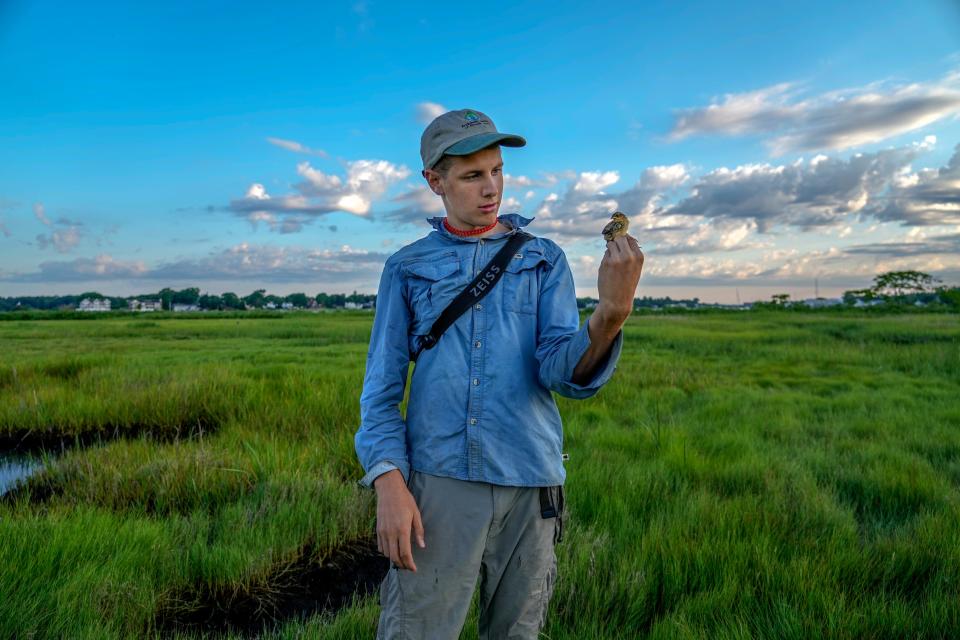
This summer in New Hampshire, Adrienne Kovach, associate professor of natural resources and the environment at the University of New Hampshire, visited marshes throughout the state with fellow researchers to identify the presence of saltmarsh sparrows as a way of prioritizing salt marshes for restoration.
They monitored nests and banded birds on select marshes in New Hampshire and southern Maine, tracking their nesting success and long-term survival.
How can I help birds where I live?
Recovery of these species is possible, the "State of the Birds" report emphasizes, and there are strategies to reverse declines.
The report notes saltmarsh sparrow recovery is achievable "with prioritized actions to address sea-level rise across more than a dozen states identified by the Atlantic Coast Joint Venture," a partnership focused on the conservation of habitat for native birds in the U.S. Atlantic Flyway.
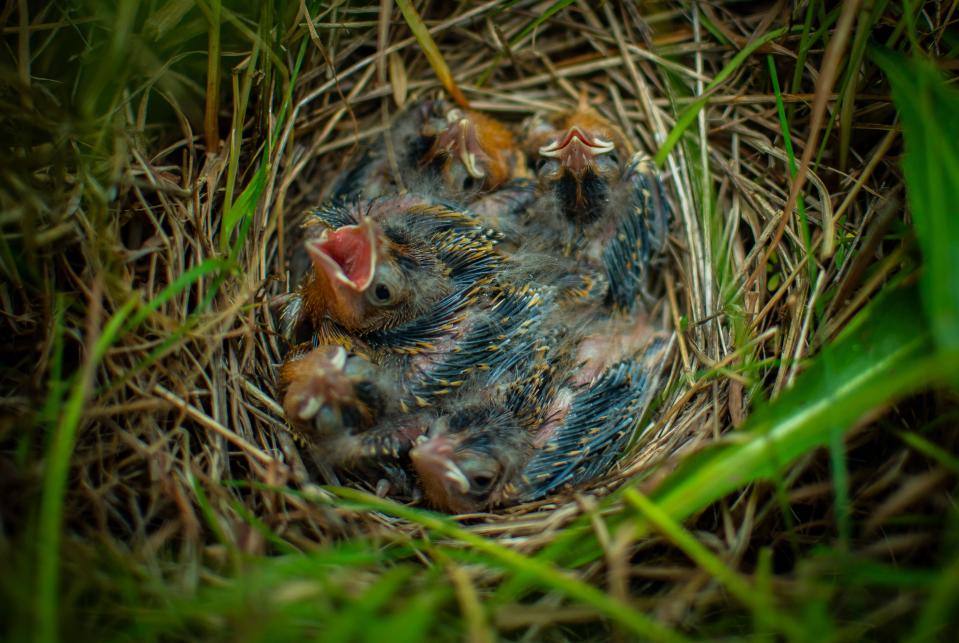
In addition to large scale, systemic changes, individual people can have a huge impact on birds. The Cornell Lab of Ornithology published seven simple actions people can take to help birds, including making sure windows are safer during day and night, keeping cats indoors, adding native plants, avoiding pesticides and even drinking coffee made using growing practices that are "good for birds."
Rat poisons are killing New England eagles and owls:How you can help save them
"What we know is that people cherish wildlife and birds in particular," said Walsh. "Birds have that mystery and wonder, and they make us ask questions. There's a thing about us that identifies with birds and makes us curious."
Gannett reporter Alex Kuffner and former Gannett reporter Sawyer Loftus contributed to this story.
This article originally appeared on USA TODAY NETWORK: 'State of the Birds' report: Some New England species near extinction

